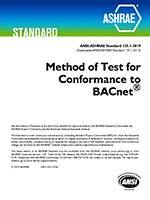The most important objective for a building is to provide the occupants with a comfortable indoor climate, and we want to achieve this as economically as possible. Fanger (1970) deduced a “thermal index” that could express a subject’s thermal sensation in a climate deviating from the optimum. Fanger assumed that thermal sensation is a function of the thermal load of the body. He quantified the relationship from the results of experiments in which people were asked to cast a “thermal sensation” vote. Clothing, activity, air temperature, mean radiant temperature, relative air velocity, and humidity were carefully controlled so that a thermal load could be calculated. This work shows the results obtained when replacing dry-bulb temperatures with a predicted mean vote (PMV) calculation. The results also show that (1) the fluctuations of the PMV are (within limits) acceptable to the occupant or occupants and (2) under which circumstances these fluctuations will occur. Simulation techniques are used to determine building loads and control strategies. These control strategies are then optimised to minimise the operating cost (i.e., energy and demand charges) while controlling the HVAC system to meet comfort criteria in the occupied zone.
KEYWORDS: thermal comfort, comfort index, energy consumption, optimisation, buildings, occupiers, energy conservation, heat load, human body, experiment, clothing, activity, air temperature, mean radiant temperature, humidity, calculating, temperature.
Citation: Symposium, ASHRAE Transactions 1993, Vol.99, pt.1
Product Details
- Published:
- 1993
- Number of Pages:
- 12
- File Size:
- 1 file , 1.3 MB
- Product Code(s):
- D-18212


